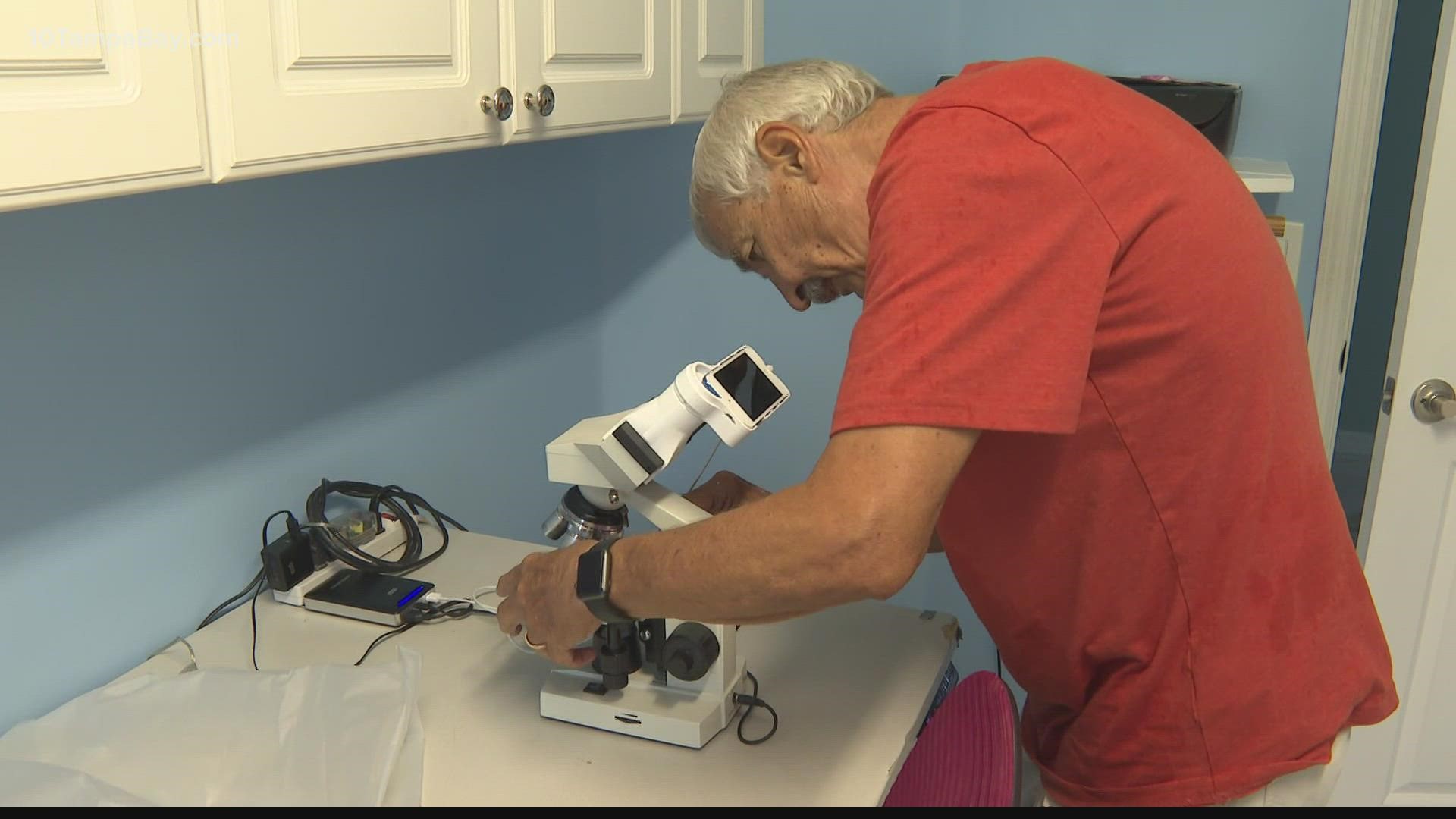SARASOTA, Fla. — Citizen science volunteers can use a relatively low-cost tool to help increase the size and accuracy of a red tide monitoring network, according to a study published in the peer-review journal PLoS ONE
It's part of a network of scientists and researchers gathering data and information to better protect public health from the impacts of toxic algae in the Gulf of Mexico.
Red tide can be especially harmful to people with asthma and other chronic respiratory diseases. When a bloom occurs, many people in this category are often impacted and are likely to need medical treatment. Costs for these increased ER visits can range depending on severity and duration of exposure.
"I got tired of walking into the water when it was pretty rough, you know an old guy it's hard to walk through that stuff so it's easier when you've got something to reach in," said Karl Kaukis of Charlotte County.
Kaukis is a volunteer scientist rigged a sample tube to a painter's pole to help him with getting water from the ocean everyday.
He's part of a team of citizen volunteers trained in the program run by the Gulf of Mexico Coastal Ocean Observing System to use a HABscope in monitoring red tide concentration,
RELATED: 'It can be very patchy': Scientists work to map healthy beaches to help beachgoers avoid red tide
According to GCOOS to develop the HABscope, researchers took a low-cost, classroom-grade, portable microscope and outfitted it with a special adaptor. The gadget was designed by the team's engineer and printed on a 3D printer.
The engineers then used that piece to mount an Apple iPod touch to the eyepiece of the microscope. A portable power pack provides the power to light the microscope.
When the gadget is given to a citizen science volunteer, they collect a water sample, place it under the microscope and use the iPod touch to take a video.
"That uploads to their database where they are able to analyze it both with the software and with an analysts looking at it separately," Kaukis said.
GCOOS Research Specialist and Product Developer Robert Currier used open-source machine-learning software (Tensor Flow) to build a model that would help the computer automatically identify Karenia brevis cells in the water sample as well as its concentration.
The automated process reports its findings to researchers forecasting red tide models and can be shared with the public for more accurate reports on the algae's presence at a local beach and if concentrations are high enough for public health concerns.
"You can get a beach-by-beach break down with a 3 hour window showing this morning Lido Key is bad but Nokomis will be good, so it give the public the opportunity to select," said Robert Currier with GCOOS.
With a large network of volunteers, the data is often more current than what the state provides.
"When you go to the beach and discover, oh my God there's a terrible red tide, and discover the next day that well if you would've gone 10 miles in the other direction, you would've been fine. But there was no way to know that because the information you get is about a week old, "said Kaukis.
"Determining cell concentrations previously required a water sample to be transported to a lab where a trained technician would review a slide to determine whether it contained K. brevis cells and counted each individual cell," Robert Currier said.
"That process took upwards of 15 minutes or longer. Now, we can automate the process with a high degree of accuracy and have a cell count back instantaneously," he added.
According to GCOOS, the study showed the following:
- An ability to increase red tide monitoring over a wider geographic area.
- Provided more accurate scientific data about red tide concentrations based on water samples instead of anecdotal reports from beach observers.
- Expanded the red tide monitoring network throughout the Gulf states in a cost-effective fashion.
The tool is also cost-effective according to the researchers. The Mobile phone-based microscope system is available commercially or through custom order and can range from $1,000 to $3,000 while the cost for HABscope is around $400.
What other people are reading right now:
- Clearwater's own Bobby Finke wins Olympic gold in 800-meter freestyle
- Lightning's national anthem singer moves to ICU days after COVID-19 hospitalization, husband says
- Live where you want, travel when you want, work from anywhere: The life of a 'digital nomad'
- Disney World to require guests to wear masks indoors, on rides regardless of vaccination status
- Rescued seahorse gives birth to hundreds of babies at Clearwater Marine Aquarium
►Breaking news and weather alerts: Get the free 10 Tampa Bay app
►Stay In the Know! Sign up now for the Brightside Blend Newsletter

